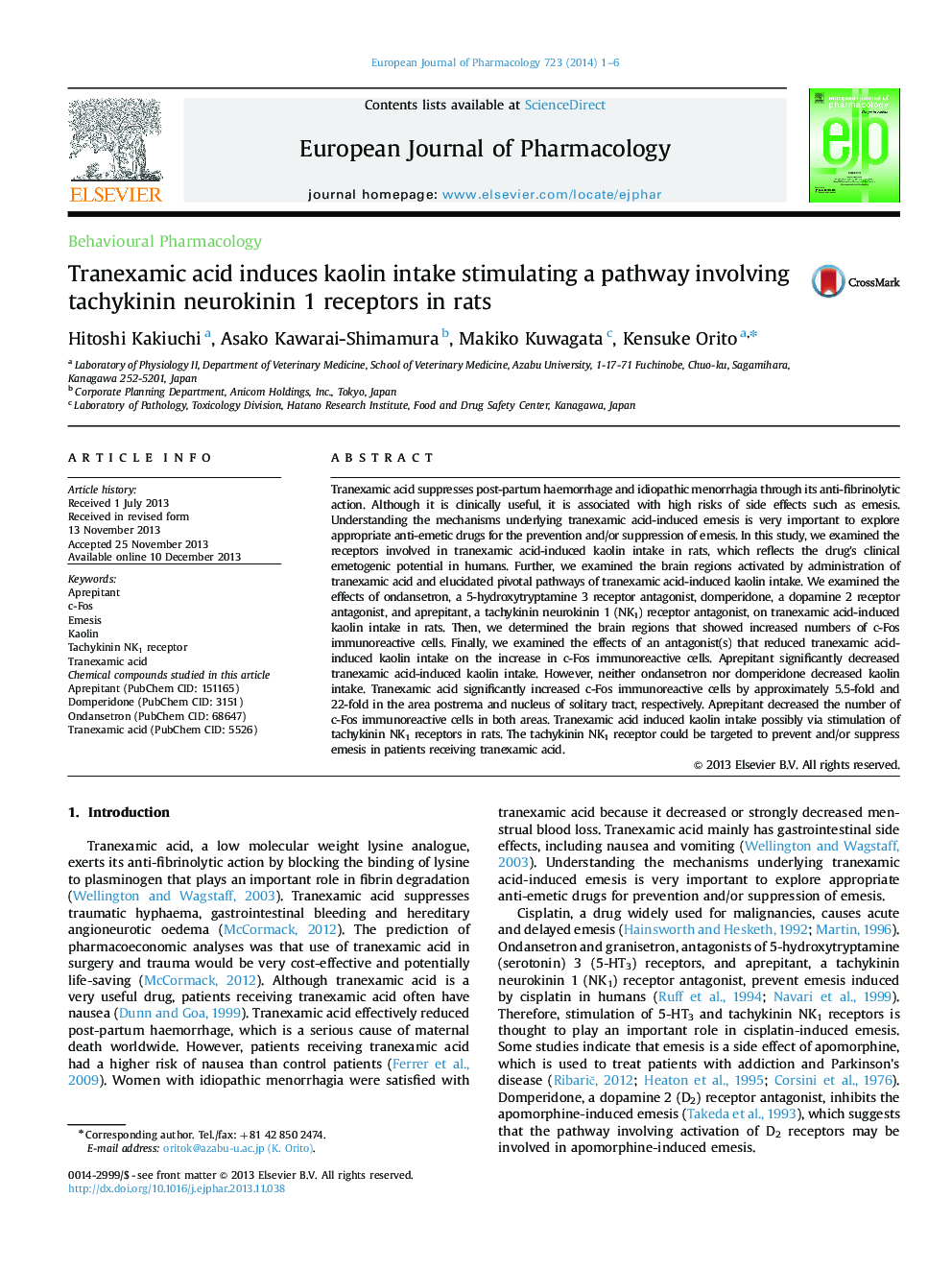| Article ID | Journal | Published Year | Pages | File Type |
|---|---|---|---|---|
| 2532002 | European Journal of Pharmacology | 2014 | 6 Pages |
Tranexamic acid suppresses post-partum haemorrhage and idiopathic menorrhagia through its anti-fibrinolytic action. Although it is clinically useful, it is associated with high risks of side effects such as emesis. Understanding the mechanisms underlying tranexamic acid-induced emesis is very important to explore appropriate anti-emetic drugs for the prevention and/or suppression of emesis. In this study, we examined the receptors involved in tranexamic acid-induced kaolin intake in rats, which reflects the drug's clinical emetogenic potential in humans. Further, we examined the brain regions activated by administration of tranexamic acid and elucidated pivotal pathways of tranexamic acid-induced kaolin intake. We examined the effects of ondansetron, a 5-hydroxytryptamine 3 receptor antagonist, domperidone, a dopamine 2 receptor antagonist, and aprepitant, a tachykinin neurokinin 1 (NK1) receptor antagonist, on tranexamic acid-induced kaolin intake in rats. Then, we determined the brain regions that showed increased numbers of c-Fos immunoreactive cells. Finally, we examined the effects of an antagonist(s) that reduced tranexamic acid-induced kaolin intake on the increase in c-Fos immunoreactive cells. Aprepitant significantly decreased tranexamic acid-induced kaolin intake. However, neither ondansetron nor domperidone decreased kaolin intake. Tranexamic acid significantly increased c-Fos immunoreactive cells by approximately 5.5-fold and 22-fold in the area postrema and nucleus of solitary tract, respectively. Aprepitant decreased the number of c-Fos immunoreactive cells in both areas. Tranexamic acid induced kaolin intake possibly via stimulation of tachykinin NK1 receptors in rats. The tachykinin NK1 receptor could be targeted to prevent and/or suppress emesis in patients receiving tranexamic acid.
